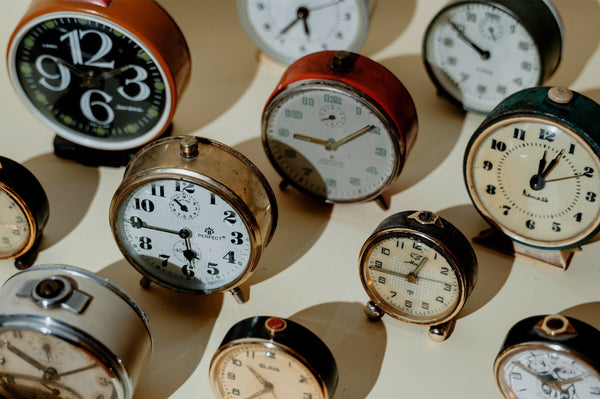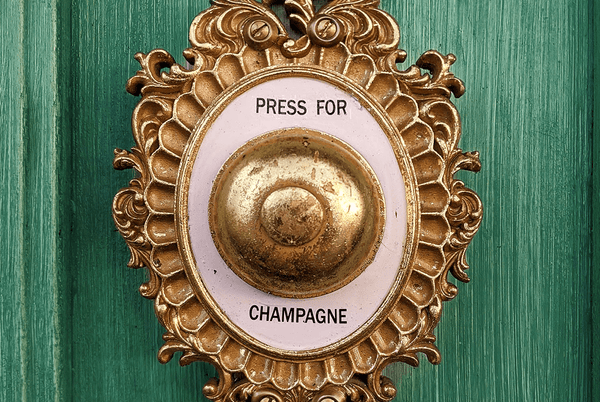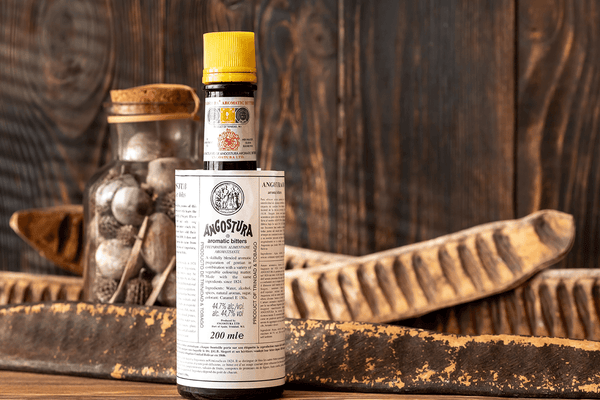CONNECTING BOURBON STREET
& BOURBON WHISKEY
Bourbon Street (or Rue Bourbon, as it was called then) sits in the heart of the city's French Quarter district, spanning 13 blocks from Esplanade Avenue to Canal Street. It also runs through portions of the Marigny neighborhood. The early Bourbon Street featured homes, stables, and a small brewery, and many of the current structures feature the unique architectural style for which New Orleans is known and revered...

Ever wondered how the world-famous Bourbon Street in New Orleans got its name? You're not alone. Debates about whether it's named for the popular spirit 'bourbon whiskey" have been going on for years. Here's a guide to where the party street's name hails.
History of Bourbon Street
New Orleans is one of the oldest cities in the nation, boasting iconic buildings, rich cultural influences, and a well-known street called Bourbon Street. Even before America became an officially recognized nation, a French explorer settled in the area in its earliest days. Jean-Baptiste Le Moyne de Bienville receives the credit for establishing the Big Easy, but a French engineer laid out the streets a few years later in 1721. This engineer, Adrien de Pauger, selected one of the city's streets to bear the name Bourbon in honor of the family in power in France.
Bourbon Street (or Rue Bourbon, as it was called then) sits in the heart of the city's French Quarter district, spanning 13 blocks from Esplanade Avenue to Canal Street. It also runs through portions of the Marigny neighborhood. The early Bourbon Street featured homes, stables, and a small brewery, and many of the current structures feature the unique architectural style for which New Orleans is known and revered.
The House of Bourbon
The House of Bourbon was a dynasty of French origin, featuring kings that ruled Navarre and France beginning in the 1700s. A related dynasty, the Spanish Bourbon dynasty, ruled in Spain, Parma, Sicily, and Naples during the following century. Additionally, Luxembourg and Spain have monarchs that hail from this European dynasty. It originated in the late 13th century as the result of the marriage between King Louis IX's youngest son and the heiress of the lordship of Bourbon.
The three dynasties of Bourbon were split into three houses. The first house included the lords of Bourbon, and this group mainly died out by the early 13th century. The final descendant of that family married Guy II of Dampierre, forming the Second House of Bourbon. Additional marriages and the births of children created more heirs to the family. After recapturing the throne, the third house of Bourbon regained power in France.
Today's Bourbon Street
If you visit New Orleans today, Bourbon Street is a thriving area of the city. Eateries and nightclubs line the street, drawing tourists who want to experience all it offers. One of the most famous spots on Bourbon Street is the Royal Sonesta Hotel, which opened more than five decades ago. This resort-style hotel features a traditional courtyard, private balconies off many rooms, and a luxurious swimming pool. Galatoire's Restaurant is one of the most popular eateries on Bourbon Street, featuring French Creole cuisine. It's been open since 1905 and serves lunch and dinner.
Bourbon Street is also the home of an epic Mardis Gras celebration every year. Thousands flock to the Big Easy annually to celebrate the Carnival season, reveling on the streets throughout the day and night. But that's not the only celebration that takes place on Bourbon Street. Men and women come all year round for bachelor and bachelorette parties, girls' weekends, and birthday celebrations, enjoying the party vibe for which the French Quarter is well known.
The Origins of Bourbon Whiskey
Now that you know the origin of Bourbon Street, you might wonder how bourbon whiskey got its name. Is the spirit named after the European dynasty as well? The answer is probably yes, although in a somewhat roundabout way.
See, the state of Kentucky is home to Bourbon County, which is in the northeastern area. Bourbon County was established after the nation was founded and named for, you guessed it, the French House of Bourbon.
Several distilleries opened in the area and started producing whiskey. When the barrels were shipped, they were labeled “old Bourbon” and sent along the Ohio River. Although this marking likely referred to the location where the contents were produced, the whiskey inside ended up being called bourbon. This name distinguishes the spirit from other whiskey styles, often influenced by the regions in which they're produced.
Differentiators of Bourbon
One thing that makes bourbon different from other types of whiskey is its manufacturing and aging process. Whiskey is a spirit made from fermented grain, but the type of grain used in making the whiskey is part of what gives it the unique flavor. Bourbon is made from a mixture of grains, known as mash, that is at least 51% corn. Since corn is one of the sweeter grains used in the distillation process, bourbon has a distinctive sweet taste.
Another differentiator is that bourbon is aged in new charred oak barrels for at least two years. This type of whiskey contains no colorings or additives. And to classify a spirit as bourbon, it must meet regulations from the American Bourbon Association, which makes these distinctions. Other types of whiskey can age in barrels that have been used for aging other spirits, and some manufacturers use casks that once held sherry, port, or rum.
Bourbon must reach a specific alcohol content level when in its barrel. The mash is distilled at 160 proof, which means 80% alcohol by volume. During the aging process, it can't go higher than 125 proof or 62.5% alcohol by volume. Before it's bottled, bourbon goes through a filtration and dilution process to no lower than 80 proof. Other whiskey types have their standards for distilling and barreling.
At Rabbit Hole Distillery, we're proud to keep the history of bourbon and Bourbon Street alive with our unique offerings. During Prohibition, the production of bourbon stopped, erasing much of what early distillers had accomplished. We pay homage to the past by restoring the creativity of distilling, and our results speak for themselves. Raise a glass of our best bourbon in honor of Bourbon Street, the early days of whiskey, and even the French House of Bourbon.






